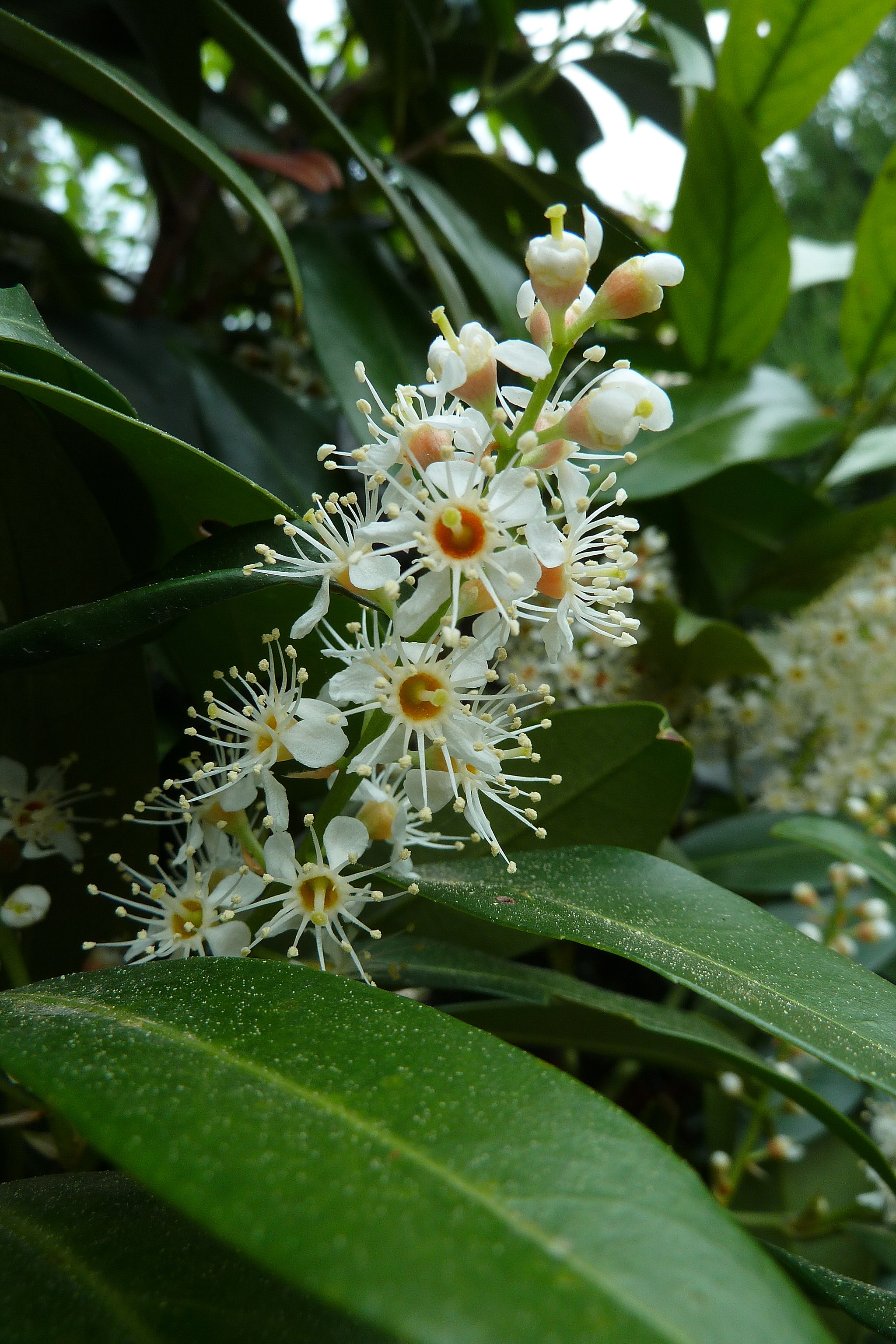Cherry laurel identification and control
About this weed
Cherry laurel is designated as a weed of concern in King County and is on the Monitor List of the Washington State Noxious Weed Control Board. This means control is not required, but is recommended, and new plantings are discouraged.
Cherry laurel is known as Prunus laurocerasus and it is in the rose family. Other common names include English laurel.

Why it's a problem
Cherry laurel is naturalized in Washington, British Columbia, Oregon, and California. It is most common west of the Cascades in Washington.
Cherry laurel has escaped cultivation into forests and parks adjacent to developed areas and occasionally into more remote areas. In King County, cherry laurel impacts urban parks and forests, especially in the Seattle area, but populations can be found throughout the county.
Cherry laurel shades out tree seedlings and native shrubs and replaces canopy trees over time. Very fast-growing and tolerant of a wide range of conditions, cherry laurel is a strong competitor and thrives in our climate. Because it is spread by birds to remote areas, it has the potential to be a serious threat to native forest land in the Puget Sound region. Cherry laurel is also poisonous to eat.
Plant description
Cherry laurel is a tall, dense evergreen shrub or small tree that forms dense thickets. It can grow up to 30 feet tall either as a single trunk or multi-stem shrub. It is native to parts of Europe and Asia.
The plant has thick green leaves that are shiny on top and pale underneath. The leaves are 3-8 inches long and oval in shape (oblong) with fine toothed edges. The bark is thin, smooth, often gray or dark brown, sometimes looking black when wet.
It produces a cluster of small white flowers (racemes) that resemble cherry flowers. Individual flowers are cup-shaped with 5 petals and fragrant, with many yellow stamens.
Fruit are clusters of small dark purple, cherry like fruits.
All parts of cherry laurel are poisonous including the fruit/seeds, leaves, and stems when ingested.
Cherry laurel reproduces through seeds. It spreads outward from the parent plant by layering (growing roots from stems where they touch the ground). The seeds are eaten and spread primarily by birds.
When cut, cherry laurel will sucker from the roots and resprout from cut stems.
Cherry laurel can grow in full sun to full shade. It prefers moist, well-drained soil but can grow in other soil conditions.
Cherry laurel leaf detail and...

Close up of a cherry laurel f...

Close up of cherry laurel fru...

Large clump of cherry laurel ...

Young cherry laurel in Ravenn...



Be aware of look-alike plants
Cherry laurel can resemble a closely related non-native plant, Portuguese laurel used commonly in landscaping. It can also be found growing and establishing in natural areas.
When in doubt, take photos and report them on iNaturalist.
What to do if you find it
Because cherry laurel is already naturalized in many places in King County and is not on the State Noxious Weed List, we are not tracking locations. It is important to stress that cherry laurel is produced and sold in Washington and Oregon and there are no regulations or limits on its sale or use in landscaping.
Control methods
We recommend using a combination of methods to control weeds. In areas with few weeds, it is important to act quickly before they become harder to control. Make a long-term plan as it often takes several years to get rid of most weeds. Start in the least infested areas first and then move into more heavily infested areas.
Manual/Mechanical control
Small plants can be dug up when soil is moist (take care when handling because this plant is poisonous if ingested).
To control larger plants, cut stems and trunks by hand or chainsaw, cutting as close to the ground as possible, and remove stems to make it easier to control re-growth. Leaving stems on moist ground might result in some stem-rooting.
After cutting, plants are very likely to re-grow. There are three main options for controlling the re-growth after cutting:
Dig out the stumps including as much root as possible. This will be labor intensive. To avoid regrowth, stumps should be turned upside down and soil should be brushed off roots. If the stumps are dug up, be sure to stabilize the area to prevent erosion and replant with appropriate trees and shrubs, especially on steep slopes. For large infestations or steep slopes, digging may not be the best method.
Monitor cut area for re-growth and cut any new stems. This should be done regularly throughout the growing season over several years until the plant stops sending up new shoots.
Monitor the area for seedlings and pull them up. They are easy to spot with their thick, shiny leaves pointed at the tips. Applying mulch to the area will reduce seedling growth.
Chemical control
Stay safe when using herbicide:
- Always read the label before use.
- Wear a long-sleeved shirt, long pants, shoes, and eye protection.
- Follow state and local regulations.
Immediately after cutting, treat stump by painting or spraying with concentrated glyphosate or triclopyr.
Disposal instructions
Cherry laurel branches can form roots if they contact the ground. Pile laurel stems on downed logs, brush piles, or other elevated surfaces so stems will dry out.
If creating piles on-site is not an option, dispose of laurel stems in yard waste bins or take to a transfer station. Home compost may not have the sufficient temperature required to kill the seeds so composting trees with berries is not recommended.
Because cherry laurel leaves produce a flammable vapor when heated, large piles of laurel may pose a fire risk. Avoid leaving large laurel piles near structures and monitor any piles left in wooded areas.
Noxious Weed Disposal - Washington State Noxious Weed Control Board

 Translate
Translate